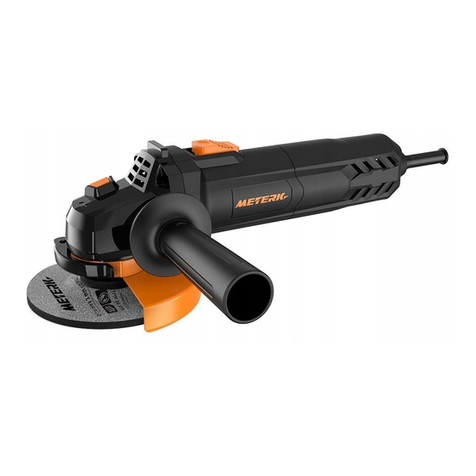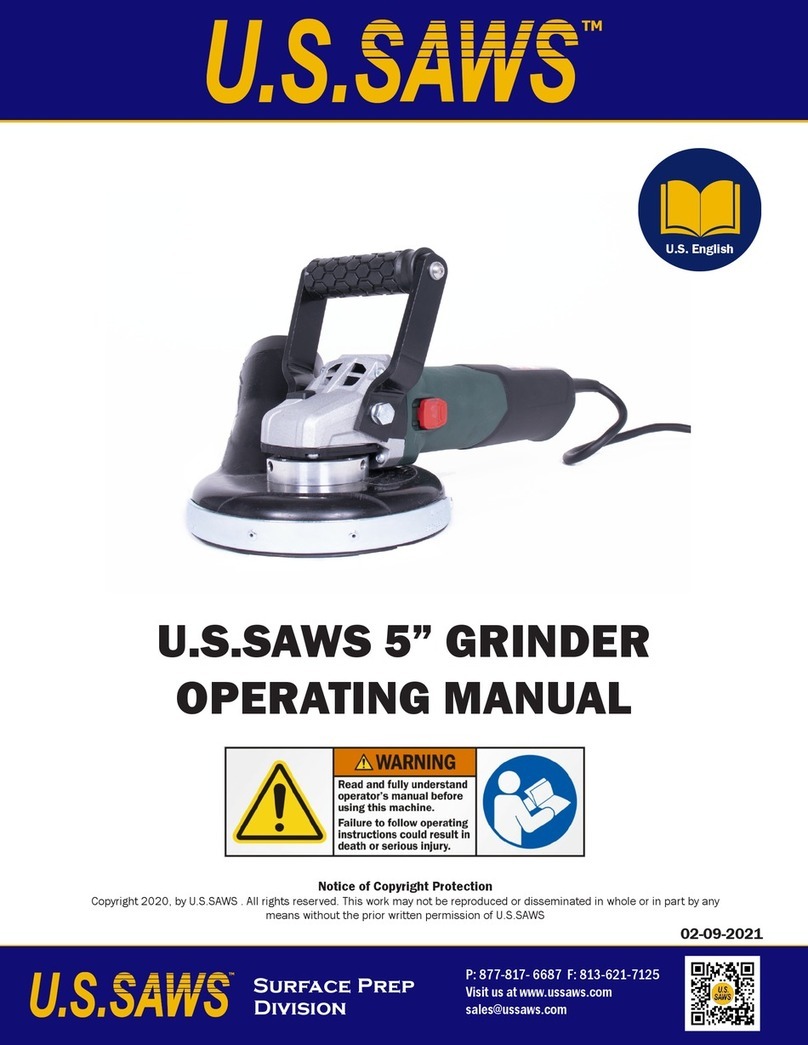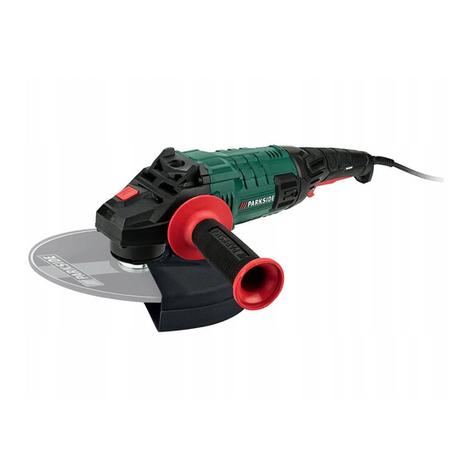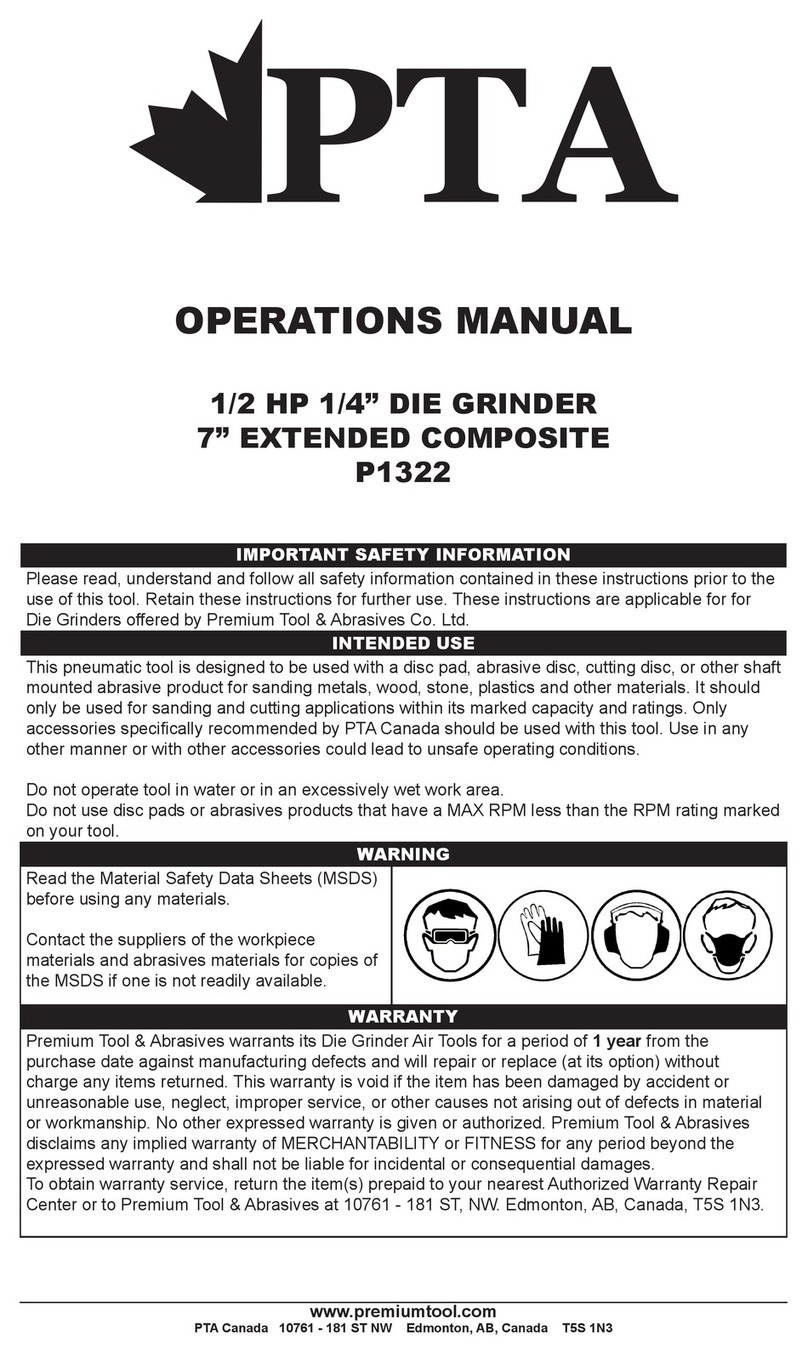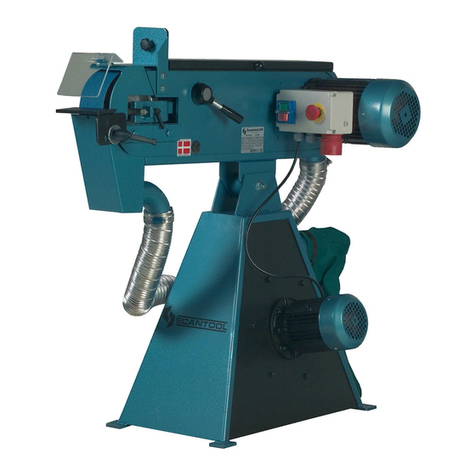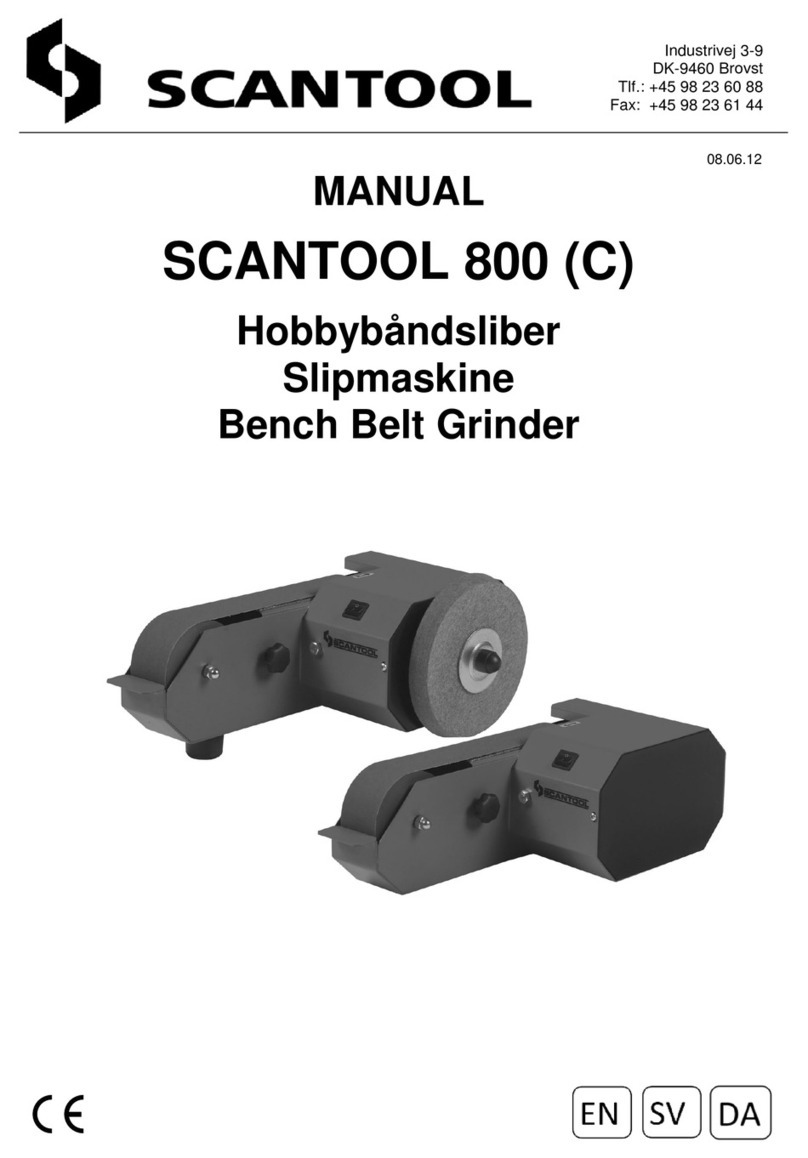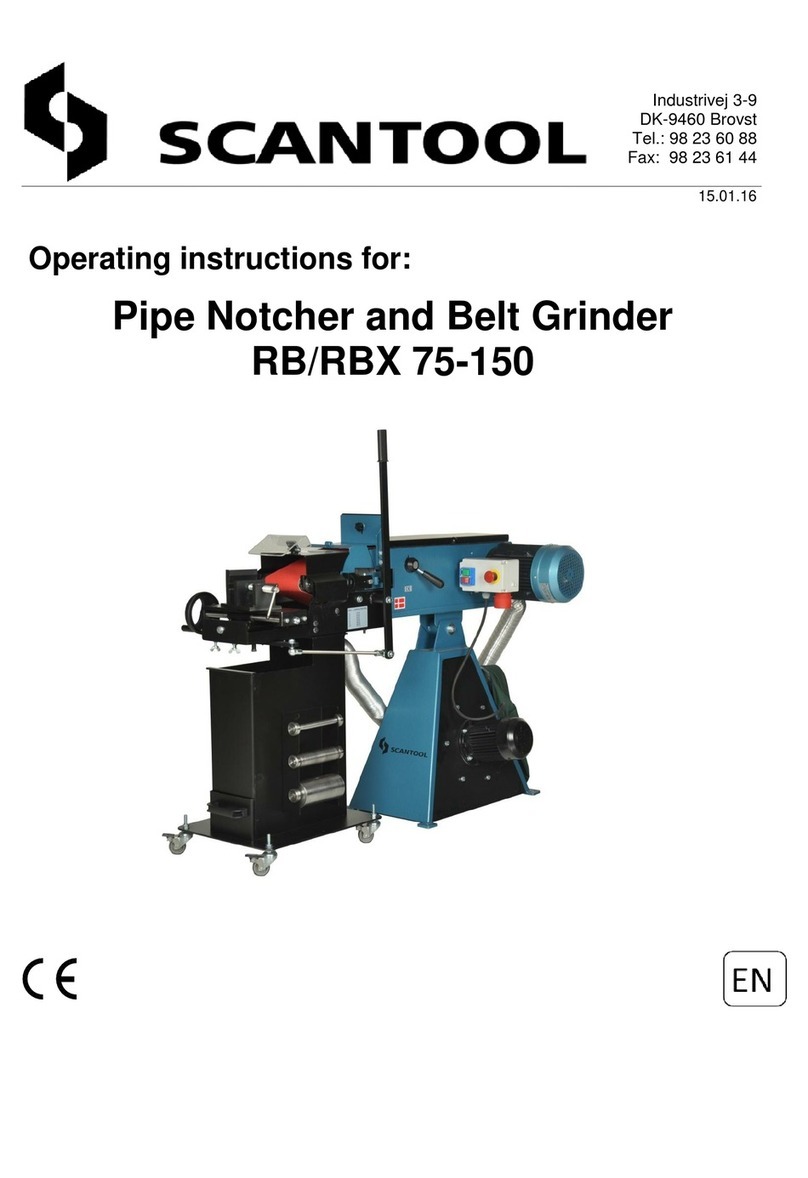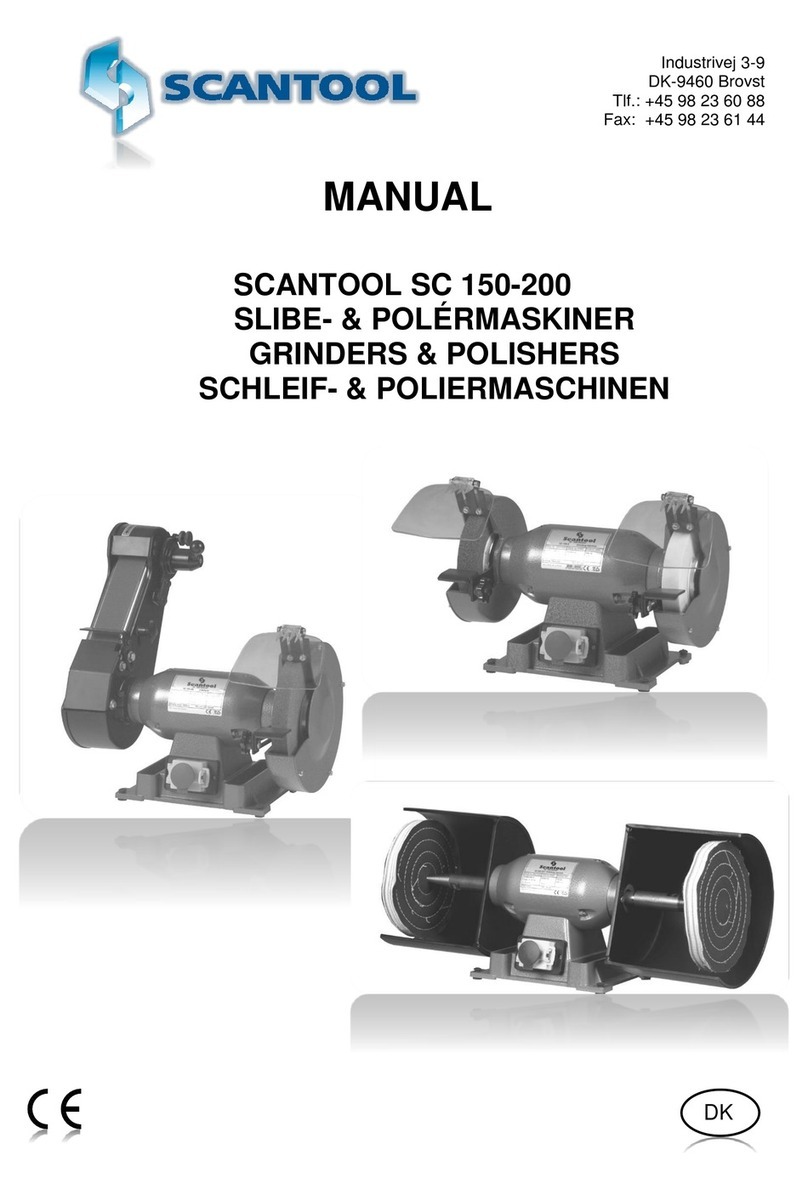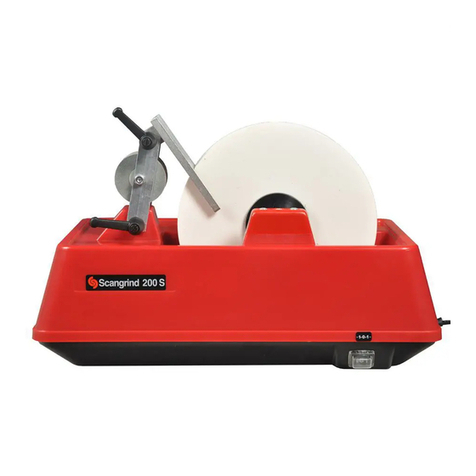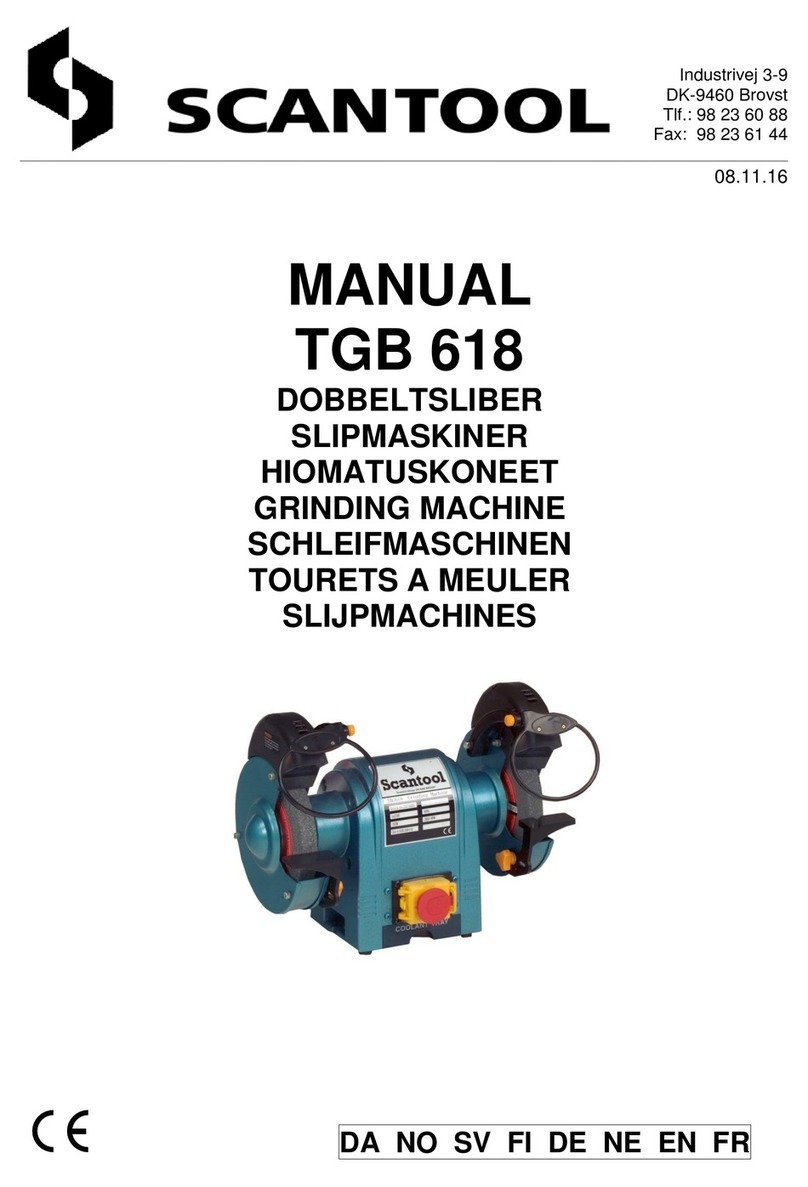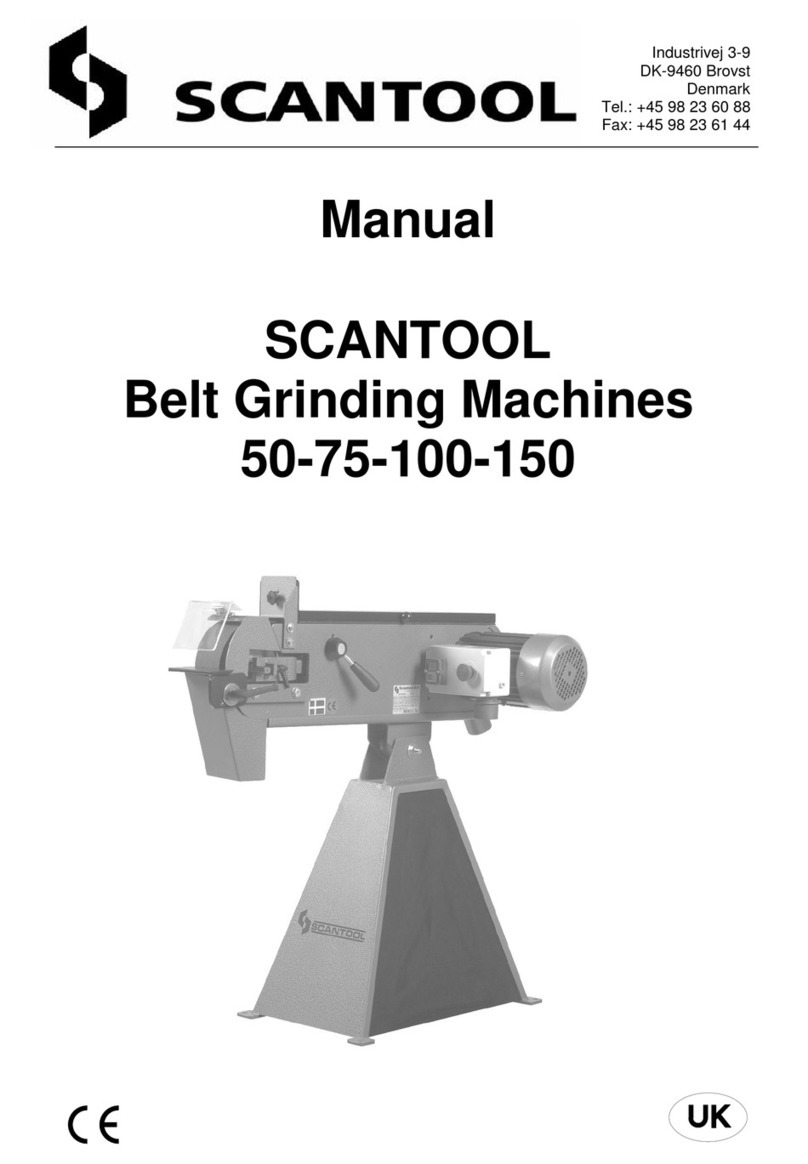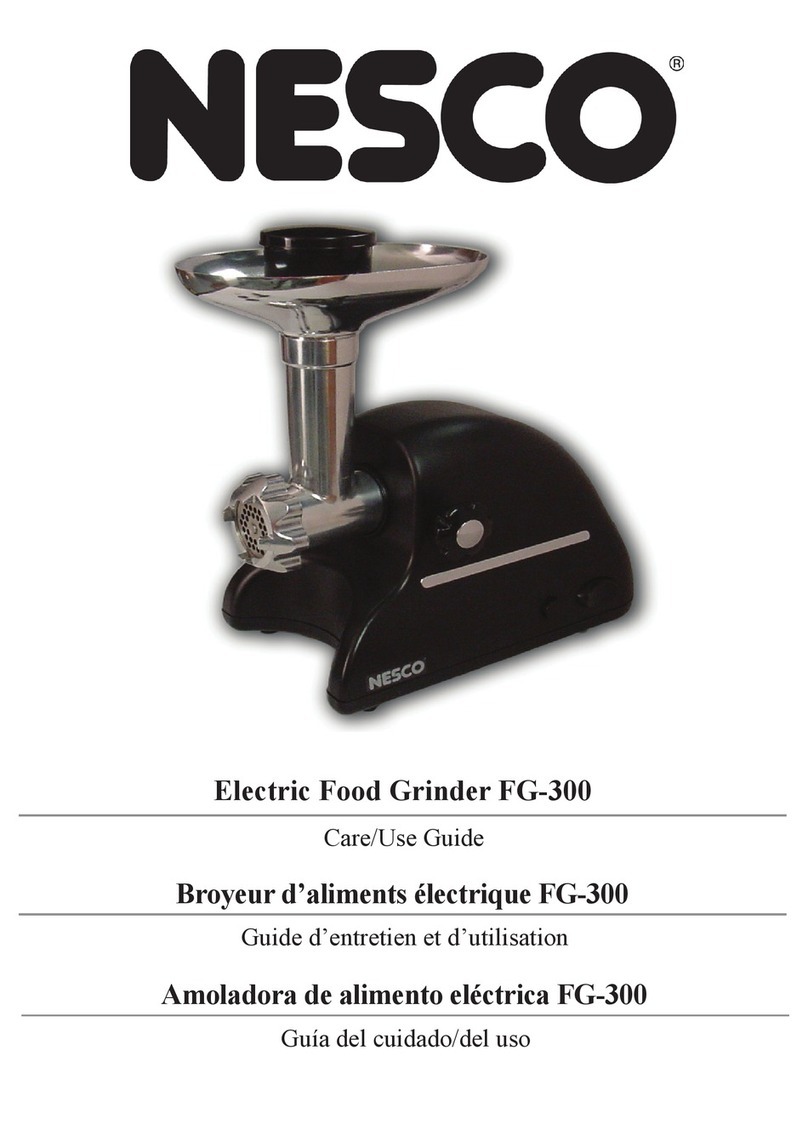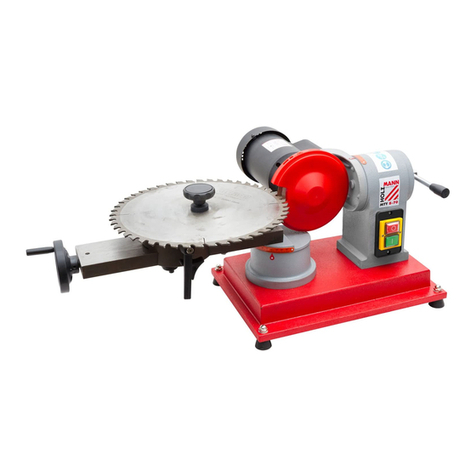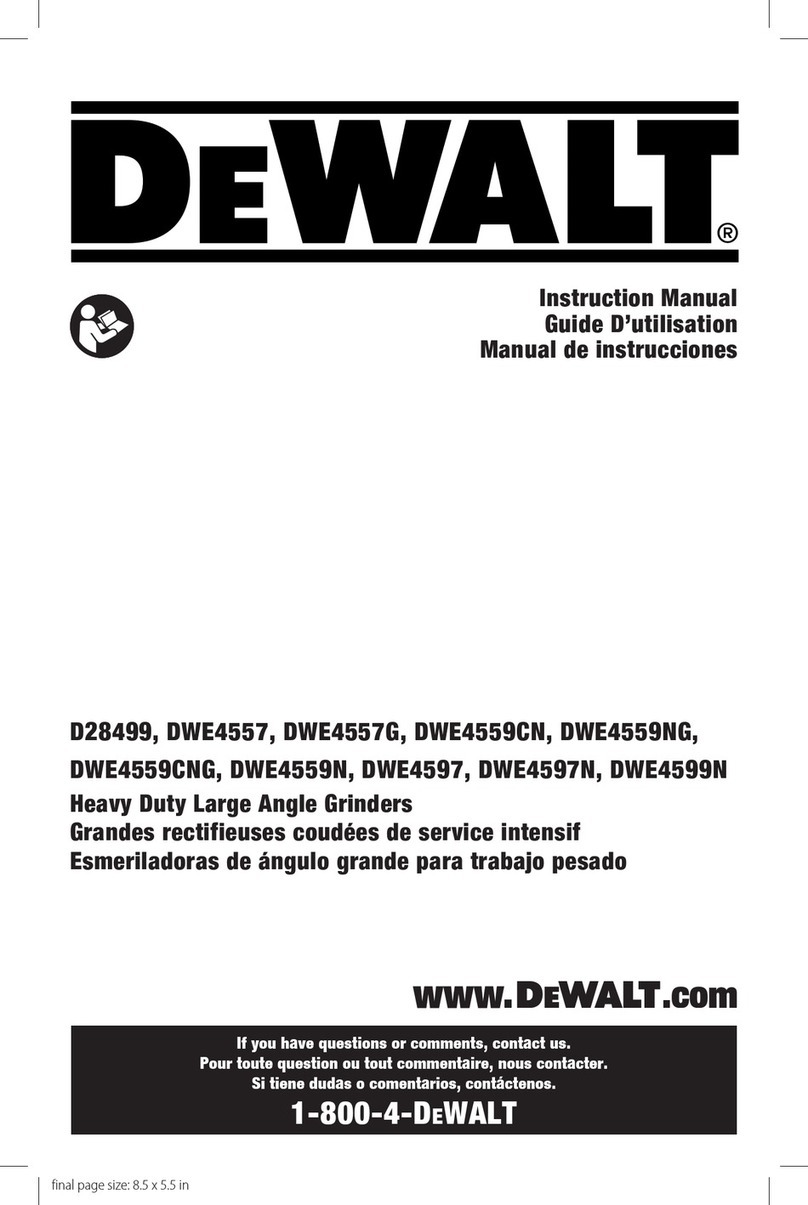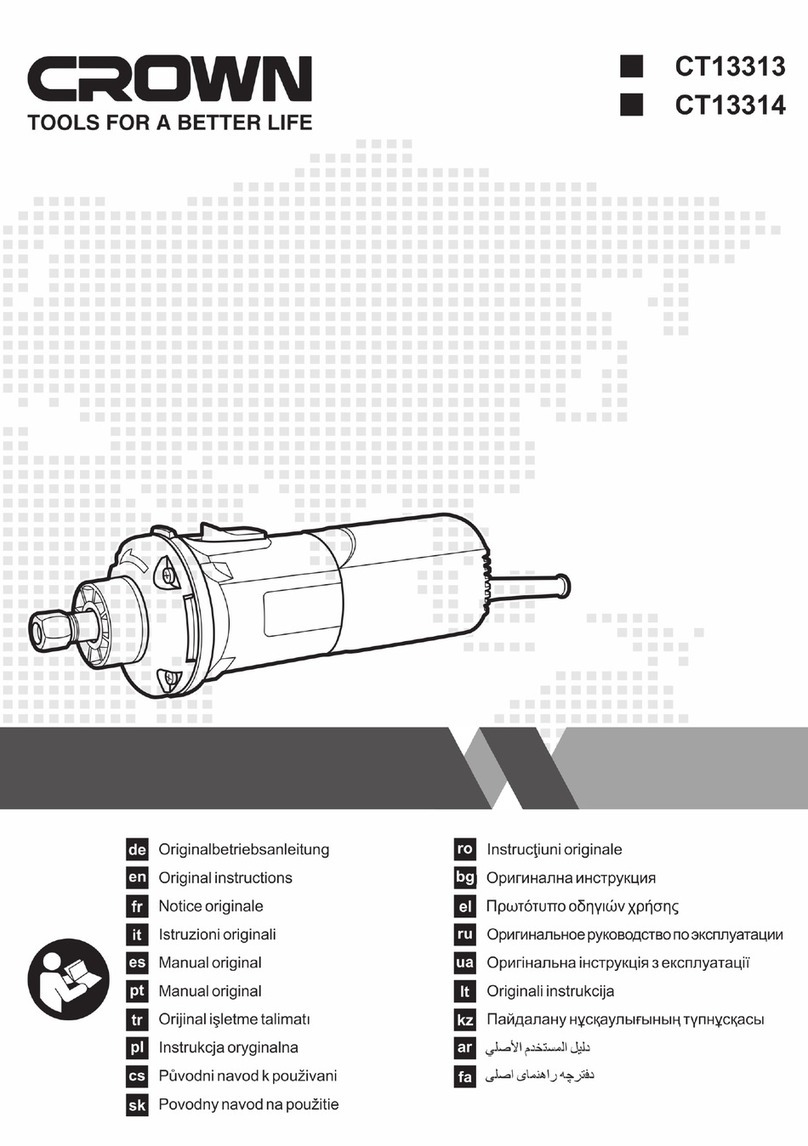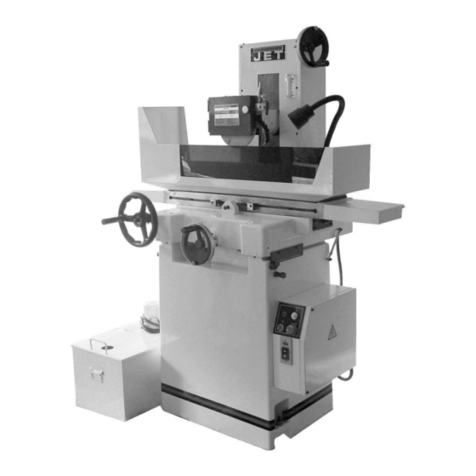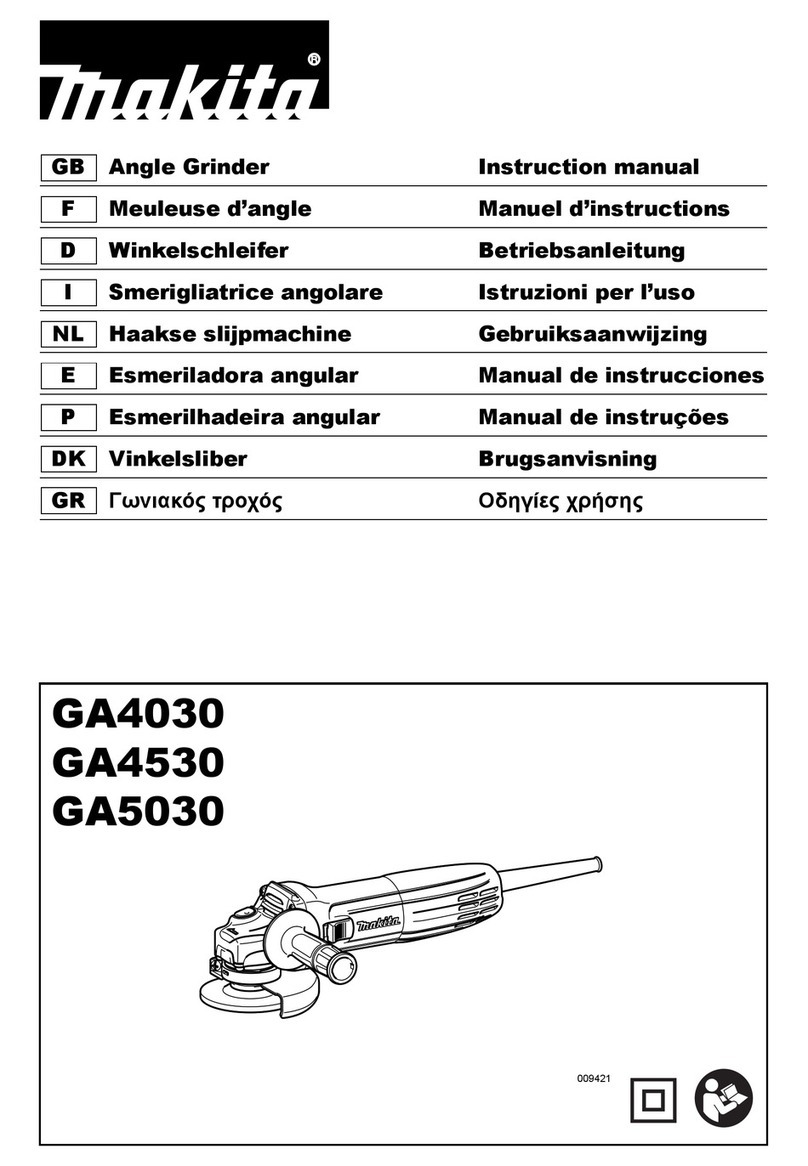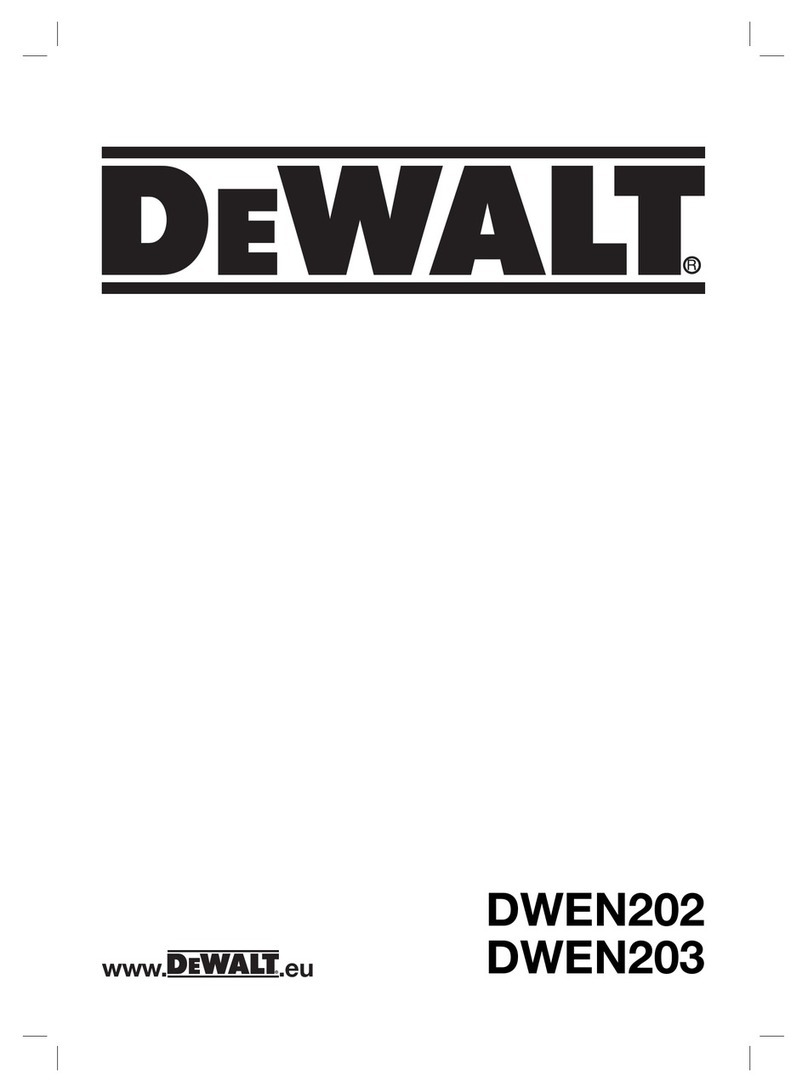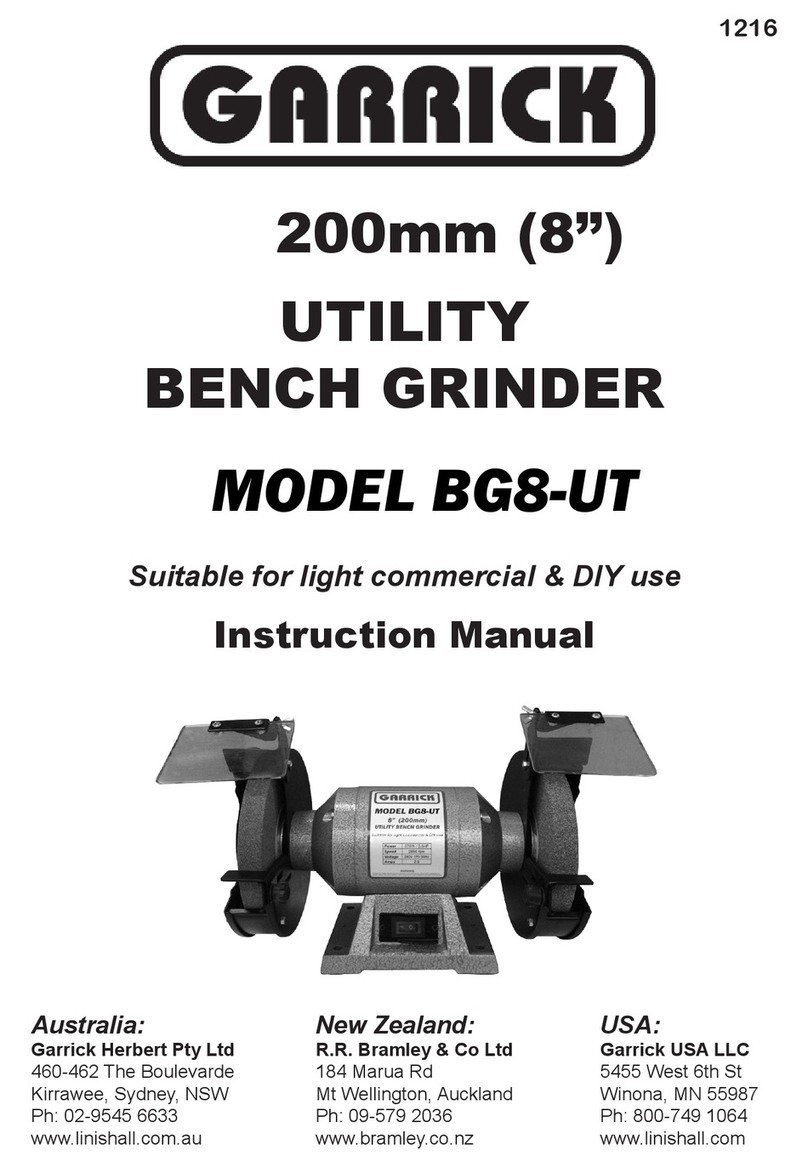ENG
1
SAFETY RULES FOR ALL POWER TOOLS
1. Read and become familiar with the entire instruction
manual. Learn the tool’s applications. limitations and
possible hazards.
2. Earth all tools. If the tool is equipped with a three-
prong plug, it must be plugged into a three-contact
electric outlet. The third prong is a ground to
provide protection against accidental electrical
shock. If an adapter is used to accommodate a two-
contact outlet, the adaptor’s grounding lug must be
connected to a known ground. Never remove the
third prong on a three- prong plug.
3. Check damaged parts. A guard orany other part
that is damaged should be checked to ensure that it
will operate properly and perform its intended
function before the tool is used further.
Check for proper alignment of moving parts and for
possible broken parts, loose mountings, or any
other condition that could affect the tool’s operation.
A guard or other damaged part should be properly
re- paired or replaced.
4. Disconnect power before servicing and when
changing accessories such as blades, cutters.
5. Keep guards in place and in working order.
6. Protect your eyes from being injured by objects
thrown by a power tool. Always wear safety
glasses orsafety goggles.
7. Wear a face mask or dust mask if the cutting
operation produces dust.
8. Don’t force the tool. It will give a better and safer
performance when used on jobs for which it was
de- signed.
9. Avoid accidental starting. Ensure that the power
switch is in the OFF position before plugging in the
power cord.’ Remove the switch when the tool is
not being used.
10. Remove adjusting keys and wrenches.
Ensure that keys and adjusting wrenches are
removed from the tool before turning it on.
11. Drugs, alcohol, and medication. Do not operate tool
if you are under the influence of drugs, alcohol, or
medication that could affect your ability to use the
tool properly.
12. Use recommended accessories. Using improper
accessories can be hazardous. If in doubt, check the
instruction manual.
13. Never stand on a tool. Falls can result in
injury.
14. Never leave a tool running unattended. Turn the
power switch OFF. Don’t leave the tool until it has
come to a complete stop.
15. A1ways remove the power cord plug from the electric
outlet when adjusting, changing parts, cleaning, or
working on the tool.
16. Avoid dangerous conditions. Don’t use power tools in
wet or damp areas or expose them to rain. Keep your
work area clean and well lighted. Do not use power
tools in areas where fumes from paint,
solvents, or flammable liquids pose a potential hazard.
17. Keep visitors and children away.
Other people should keep a safe distance from the work
area, especially when the tool is operating.
18. Use the proper tool. Don’t force a tool to do a job for
which it was not de- signed.
19. Keep tools in top condition. Keep them clean and sharp
for the best and safest performance. Follow the
instructions for changing accessories and lubricating.
20. Secure all work. When practical use clamps or a vise to
hold work. It is safer than using your hands and pre-
vents round or odd-shaped pieces from turning.
21. Don’t overreach. Keep proper footing and balance
always. Wear oil- resistant rubber-soled footwear.Keep
the floor clear of oil, scrap wood, and other debris.
22. Wear proper clothing and, if necessary, protective hair
covering. Loose clothing or jewelry can get caught in
moving parts.
23. Make the workshop childproof with padlocks, master
switches, or by removing starter keys.
